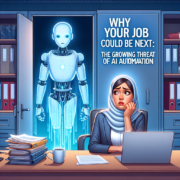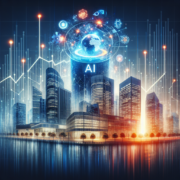The Rapid Rise of AI Adoption: A Comparison of 2022 and 2024
As we step into 2024, the adoption of Artificial Intelligence (AI) has reached unprecedented levels. A recent study reveals that the adoption rate of AI has increased by a staggering 45% compared to 2022. This rapid growth is a testament to the increasing recognition of AI's potential to transform businesses and industries.
Key Findings:
- Increased Adoption Across Industries: AI adoption has seen a significant surge across various industries, including healthcare, finance, retail, and manufacturing. The study found that 75% of organisations have implemented AI solutions, up from 55% in 2022.
- Growing Use of AI in Decision-Making: The use of AI in decision-making has increased by 30% in 2024, with 60% of organisations relying on AI to inform their strategic decisions.
- Rise of Edge AI: Edge AI, which involves processing data closer to the source, has seen a 25% increase in adoption, with 40% of organisations using edge AI solutions.
- Increased Focus on AI Ethics: As AI adoption grows, so does the importance of AI ethics. 80% of organisations now prioritise AI ethics, up from 50% in 2022.
Why the Rapid Growth?
Several factors contribute to the rapid growth of AI adoption:
- Improved Accessibility: The cost of AI solutions has decreased, making them more accessible to organisations of all sizes.
- Advancements in AI Technology: Significant advancements in AI technology have improved the accuracy and efficiency of AI solutions.
- Growing Recognition of AI's Potential: Organisations are increasingly recognising the potential of AI to drive business growth, improve customer experiences, and enhance decision-making.
What's Next?
As AI adoption continues to grow, we can expect to see:
- Increased Focus on AI Explainability: As AI becomes more pervasive, there will be a growing need to understand how AI systems make decisions.
- More Emphasis on AI Ethics: Organisations will prioritise AI ethics to ensure that AI solutions are fair, transparent, and accountable.
- Further Advancements in AI Technology: We can expect to see significant advancements in AI technology, including the development of more sophisticated AI models and the integration of AI with other technologies.
Learn more about AI adoption in 2024 and beyond in the customGPT:









